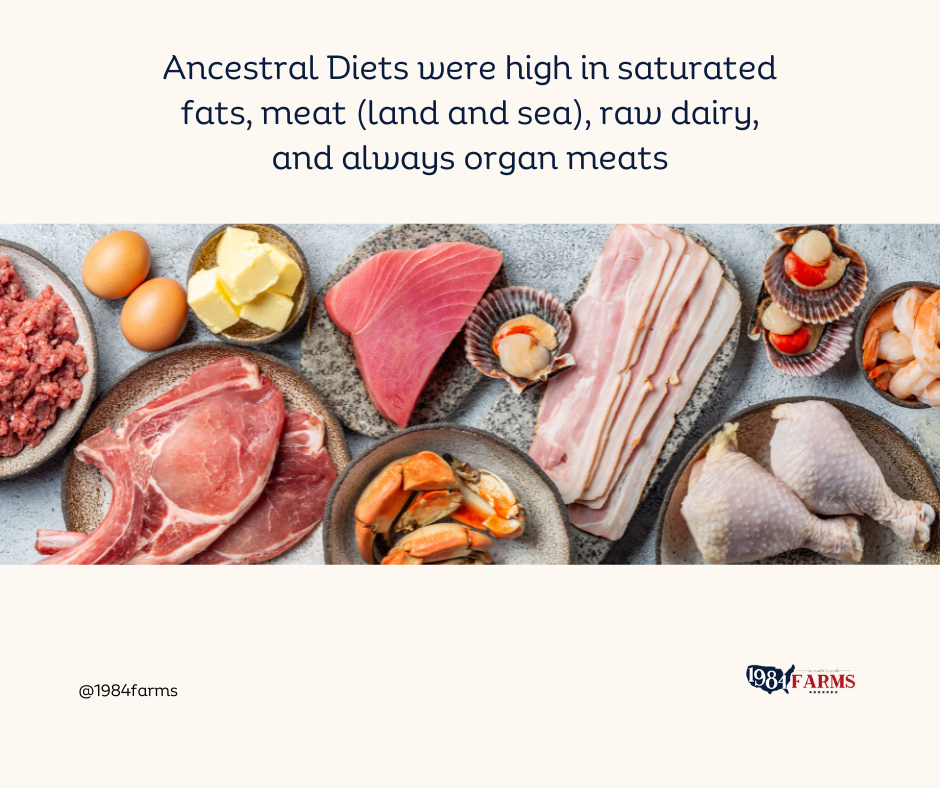
Why do we keep talking about “eating like our ancestors ate”? What does that make you think about? What kind of food did your ancestors eat? Lamb? Pig? Fish?
If you’re looking for nutrient-dense food, going back a generation or two (or 10) might enlighten you on how much our food has changed in recent years. We believe in the importance of considering how our ancestors ate as we navigate how to live a much healthier lifestyle as well as working through challenges like food transparency and food freedom.
Understanding how our ancestors ate will also help you understand our farm and why we’ve chosen to farm regeneratively. It’s a priority for us at 1984Farms to produce meat like our ancestors ate… nutrient-dense, clean, and natural.
What we mean by “ancestors” is both our personal genealogy and the early history of human survival. We can go back a couple of generations, before food like Lucky Charms and Ramen were in every household, and recognize that human diets were simple and natural.

May I tell you about my own lovely grandmother? She grew up on a dry farm in Utah and ate a lot of meat and raw dairy. Growing up, she and her family had a family milk cow, and would eat or use all the parts of the meat animals. She loves pork rinds, and was raised knowing how to fry up pig skin. It’s her 96th birthday TODAY and she’s just starting to slow down. I consider her the epitome of health!
When we consider the way meat was raised or hunted historically, there are 4 specific things we are trying to simulate with regenerative farming here at 1984Farms.
- Pure, Clean meat. Animals were not affected by synthetic toxins like pesticides, medications, or vaccines.
- Wild game and meat animals naturally ate grasses, not grain. It has only been since the 1960’s that feedlot operations and vitamin-infused grain have been introduced to farm animals, affecting the animals who literally do not have the stomach for it.
- Wild game and meat animals lived out in the open. They were free to roam in the sunshine, and they instinctively foraged for what they needed. Animals moved around and some migrated, leaving the grass to regrow before returning to an area.

- Our ancestors diets prioritized animal foods. Their diets consisted of nutrient-dense food like meat and dairy. (Their diets also lacked the amount of chemicals, synthetic vitamins, preservatives, and fillers that most store-bought food contains today.)
It doesn’t take much to look around and recognize that the health of our society is struggling. The diet of the average American is so far from the way our ancestors ate, even just a hundred years ago, and we’re paying for it in our physical, mental, and emotional health.
We believe that eating the way our ancestors ate promotes healthier individuals, healthier families, communities, and ultimately a healthier world.

We dedicate blood sweat and tears to provide truly clean meat for not just our own family but yours as well.
Click here to subscribe to our weekly newsletter to stay up to date with the farm, recipes, and special savings on meat like your ancestors ate!






